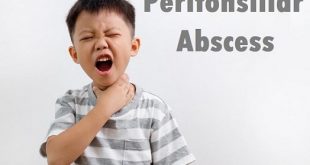Overview – Pertussis
Pertussis is a highly contagious disease of the respiratory tract caused by Bordetella pertussis, a bacteria that lives in the mouth, nose, and throat. Many children who contract pertussis have coughing spells that last four to eight weeks. The disease is most dangerous in infants and spreads easily from person to person, mainly through droplets produced by coughing or sneezing.
The first symptoms generally appear 7–10 days after infection and include mild fever, runny nose, and cough, which is typical cases gradually develops into a paroxysmal cough followed by whooping (hence the common name of whooping cough). In the youngest infants, the paroxysms may be followed by periods of apnoea. Pneumonia is a relatively common complication; seizures and encephalopathy occur more rarely. Untreated patients may be contagious for three weeks or more following the onset of the cough. Pertussis can be prevented by immunization.
Etiology and Pathophysiology
Humans are the sole reservoir for B pertussis and B parapertussis. B pertussis, a gram-negative pleomorphic bacillus, is the main causative organism for pertussis. (B parapertussis is less common than B pertussis and produces a clinical illness that is similar to, but milder than, that produced by B pertussis.) B pertussis spreads via aerosolized droplets produced by the cough of infected individuals, attaching to and damaging ciliated respiratory epithelium. B pertussis also multiplies on the respiratory epithelium, starting in the nasopharynx and ending primarily in the bronchi and bronchioles.
Pertussis is highly contagious, developing in approximately 80-90% of susceptible individuals who are exposed to it. Most cases occur in the late summer and early fall.
A mucopurulent sanguineous exudate forms in the respiratory tract. This exudate compromises the small airways (especially those of infants) and predisposes the affected individual to atelectasis, cough, cyanosis, and pneumonia. The lung parenchyma and bloodstream are not invaded; therefore, blood culture results are negative.
Transmission of pertussis can occur through direct face-to-face contact, through sharing of a confined space, or through contact with oral, nasal, or respiratory secretions from an infected source.
What is the incubation period for whooping cough?
The incubation period, or the period from exposure to the causative bacteria and development of symptoms, is longer than that for the common cold and most upper respiratory infections.
Typically, signs and symptoms develop within seven to 10 days of exposure to pertussis, but they may not appear for up to three weeks after the initial infection.
Risk factors
Whooping cough is highly contagious, and whooping cough vaccinations wear off as people get older.
Adults who have not received the whooping cough booster vaccine Tdap (tetanus-diphtheria-acellular pertussis) have a higher risk of contracting whooping cough.
Other factors that increase a person’s risk of getting whooping cough include:
- Being in close contact with someone who has whooping cough
- Having a weakened immune system
- Being pregnant
Symptoms of Pertussis
At first, whooping cough has the same symptoms as the average cold:
- Mild coughing
- Sneezing
- Runny nose
- Low fever (below 102 F)
You may also have diarrhea early on.
After about 7-10 days, the cough turns into “coughing spells” that end with a whooping sound as the person tries to breathe in air.
Because the cough is dry and doesn’t produce mucus, these spells can last up to 1 minute. Sometimes it can cause your face to briefly turn red or purple.
Most people with whooping cough have coughing spells, but not everyone does.
Infants may not make the whooping sound or even cough, but they might gasp for air or try to catch their breath during these spells. Some may vomit.
Possible complications
Infants with whooping cough require close monitoring to avoid potentially dangerous complications due to a lack of oxygen. Serious complications include:
- Brain damage
- Pneumonia
- Seizures
- Bleeding in the brain
- Apnea (slowed or stopped breathing)
- Convulsions (uncontrollable, rapid shaking)
- Death
If your infant experiences symptoms of infection, call your doctor immediately.
Older children and adults can experience complications as well, including:
- Difficulty sleeping
- Urinary incontinence (loss of bladder control)
- Pneumonia
- Rib fracture
Diagnosis of Pertussis
Diagnosing whooping cough in its early stages can be difficult because the signs and symptoms resemble those of other common respiratory illnesses, such as a cold, the flu or bronchitis.
Sometimes, doctors can diagnose whooping cough simply by asking about symptoms and listening to the cough. Medical tests may be needed to confirm the diagnosis. Such tests may include:
A nose or throat culture and test. Your doctor takes a swab or suction sample from the area where the nose and throat meet (nasopharynx). The sample is then checked for evidence of the presence of whooping cough bacteria.
Blood tests. A blood sample may be drawn and sent to a lab to check your white blood cell count, because white blood cells help the body fight infections, such as whooping cough. A high white blood cell count typically indicates the presence of infection or inflammation. This is a general test and not specific for whooping cough.
A chest X-ray. Your doctor may order an X-ray to check for the presence of inflammation or fluid in the lungs, which can occur when pneumonia complicates whooping cough and other respiratory infections.
What is the treatment for Pertussis?
Antibiotics directed against Bordetella pertussis can be effective in reducing the severity of whooping cough when administered early in the course of the disease. Antibiotic therapy can also help reduce the risk of transmission of the bacterium to other household members as well as to others who may encounter an infected person. Unfortunately, physicians diagnose most people with whooping cough later with the condition in the second (paroxysmal) stage of the disease.
Antibiotics are the recommended treatment for anyone who has had the disease for less than three to four weeks. Azithromycin (Zithromax), clarithromycin (Biaxin), erythromycin (E-Mycin, Eryc, Ery-Tab, PCE, Pediazole, Ilosone), and sulfamethoxazole (Bactrim, Septra) are antibiotics that have been shown to be effective in treating whooping cough. It is unclear whether antibiotics have any benefit for people who have been ill with whooping cough for longer than three to four weeks, although doctors still consider antibiotic therapy for this group. There is no proven effective treatment for the paroxysms of coughing that accompany whooping cough.
Health care professionals routinely administer antibiotics to people who have had close contact with an infected person, regardless of their vaccination status.
Do not give an infected child over-the-counter or prescription cough syrup or cough medicines unless instructed to do so by a doctor. They may cause sedation that leads to worsened outcomes.
If Your Child Gets Treatment for Pertussis at Home
Do not give cough medications unless instructed by your doctor. Giving cough medicine probably will not help and is often not recommended for kids younger than 4 years old.
Manage pertussis and reduce the risk of spreading it to others by:
- Following the schedule for giving antibiotics exactly as your child’s doctor prescribed.
- Keeping your home free from irritants – as much as possible – that can trigger coughings, such as smoke, dust, and chemical fumes.
- Using a clean, cool mist vaporizer to help loosen mucus and soothe the cough.
- Practicing good handwashing.
- Encouraging your child to drink plenty of fluids, including water, juices, and soups, and eating fruits to prevent dehydration (lack of fluids). Report any signs of dehydration to your doctor immediately. These include the dry, sticky mouth, sleepiness or tiredness, or thirst. They also include decreased urination or fewer wet diapers, few or no tears when crying, muscle weakness, headache, dizziness or lightheadedness.
- Encouraging your child to eat small meals every few hours to help prevent vomiting (throwing up) from occurring.
If Your Child Gets Treatment for Pertussis in the Hospital
Your child may need help keeping breathing passages clear, which may require suctioning (drawing out) of mucus. Doctors monitor breathing and give oxygen if needed. Children might need intravenous (IV, through the vein) fluids if they show signs of dehydration or have difficulty eating. You should take precautions, like practicing good hand hygiene and keeping surfaces clean.
What is the best way to prevent pertussis?
The best way to prevent whooping cough is to get vaccinated.
We recommend that all children and adults get a pertussis-containing vaccine.
- The recommended pertussis vaccine for infants and children is called DTaP. This protects children against 3 diseases: diphtheria, tetanus, and whooping cough (pertussis).
- DTaP shots are given at 2, 4, and 6 months of age. To maintain protection, boosters are also given at 15 through 18 months and 4 through 6 years of age.
- 7- to 10-year-olds who are not fully immunized with DTaP, should get a Tdap vaccine that protects against diphtheria, tetanus and whooping cough (pertussis).
- Preteens going to the doctor for their regular checkup at 11 or 12 years of age should get a booster dose of Tdap. If a preteen did not get this Tdap at 11 to 12 years, they should be vaccinated at their next doctor visit.
- All adults 19 and older who have not received a Tdap vaccine, need a booster shot.
- Adults should receive tetanus and diphtheria (Td) booster every 10 years. They should also substitute a Tdap vaccine for one of the boosters. The Tdap can be given earlier than the 10-year spacing.
- It is very important for adults to make sure they are up-to-date with their pertussis-containing vaccines if they spend any time with infants. This includes parents, grandparents, siblings, babysitters, relatives, and friends.
- Pregnant women should receive Tdap in the third trimester of every pregnancy to pass immunity to their newborn until the baby is old enough to begin shots at 2 months of age.
- Travelers should be up-to-date with pertussis-containing vaccines before they travel. Whooping cough occurs everywhere in the world.
- Health care staff who have direct contact with patients should get a single dose of Tdap if they have not already received it.
 Diseases Treatments Dictionary This is complete solution to read all diseases treatments Which covers Prevention, Causes, Symptoms, Medical Terms, Drugs, Prescription, Natural Remedies with cures and Treatments. Most of the common diseases were listed in names, split with categories.
Diseases Treatments Dictionary This is complete solution to read all diseases treatments Which covers Prevention, Causes, Symptoms, Medical Terms, Drugs, Prescription, Natural Remedies with cures and Treatments. Most of the common diseases were listed in names, split with categories.







